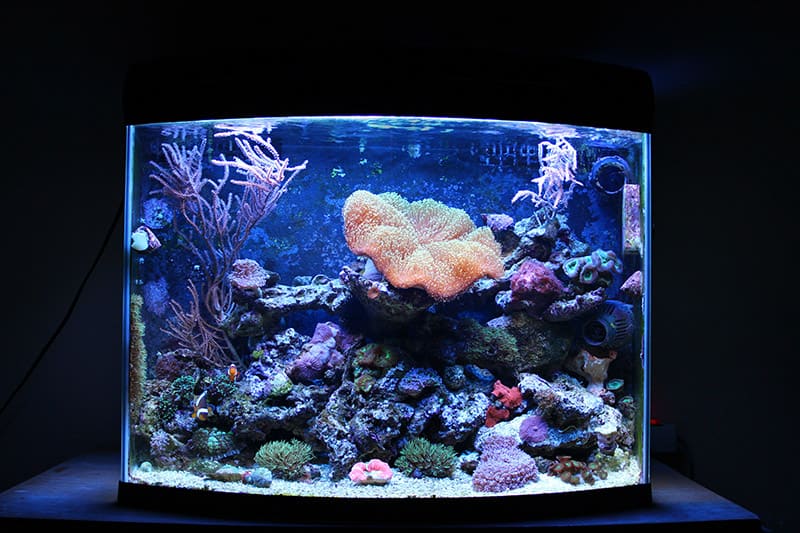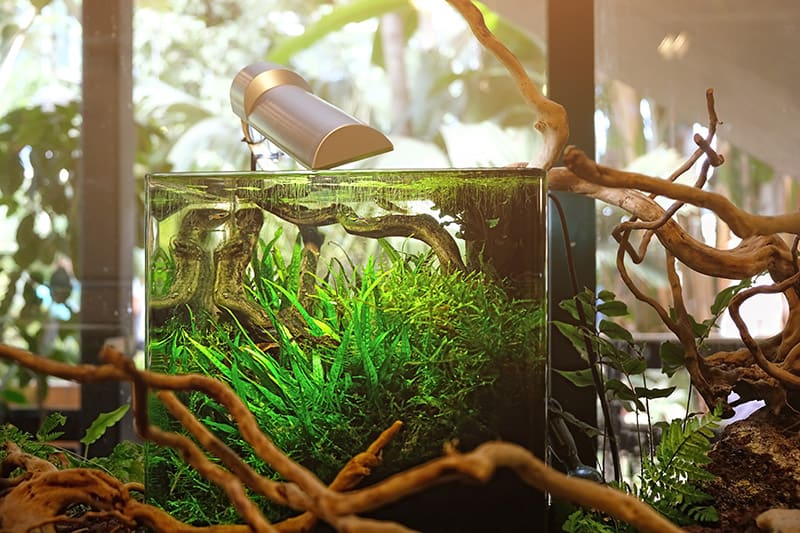Fish Selection Guide for Nano Tanks
10+ general rules for stocking the nano aquarium. For the best success, follow these suggestions when you are selecting fish for the nano aquarium, whether you plan on keeping a freshwater, saltwater, or a mini-reef tank.
Considering the nano tank’s small size, the first and most important rule when stocking your tank, is to avoid overpopulation. This rule refers not only to the number of fish you put in your tank but also the other life forms that are present. These include invertebrates like worms, clams, snails; echinoderms such as a starfish, sea urchin, or sea cucumber; crustaceans like crabs, lobsters and shrimp; other bottom feeders and even corals.
Here are some general rules on stocking your nano tank:
- Avoid putting in schooling fish since most species will not allow other fish species in the nano aquarium. There are also fish species that should be housed as the only fish in a nano tank. These include dottybacks, angelfishes, and hawkfishes.
- In nano reeftanks smaller than 20 gallons, it is not recommended to add even one Clownfish, not even a small one since it can grow big. Clownfish are territorial and will want to own the entire tank and will chase away and/or bully other fish species in the tank.
- Choose fish species that are not jumpers. Fish belong inside the tank and not on your floor. If you do select a “jumper”, make sure to put a tight-fitting cover over your tank to prevent your fish from jumping out.
- Know what your fish feeds on. You might end up placing a fish in your nano tank that feed on shrimp, snails, and other tank inhabitants. There are also herbivorous fish that thrive well on a bit of microalgae and broccoli, as well as frozen or flake fish food that contain spirulina. Knowing what their feeding habits are can ensure that you are able to meet their nutritional needs.

- Don’t mix fish of different behaviors—aggressive versus smaller and shy ones. The smaller fish species will be outcompeted for food resulting in starvation. Other factors that should also be considered include the adult size and temperament of the fish.
- Fish species with similar feeding habits may also cause a problem for each other, as they compete for food.
- When buying fish at the local fish store, ask the staff to show you that the fish you are interested in is eating. Find out what type of feed is being given so you can continue the same feeding regimen when you bring the fish home. If the fish is not eating, it is best not to buy it.
- When buying fish, observe its overall appearance. Don’t buy fish with a sunken belly since this is an indication that the fish is on a starvation diet. Buy only healthy-looking ones.
- For nano reef tanks, avoid buying fish that will nibble or pick at corals. Constant picking may cause injury that can easily get infected, or prevent coral from opening up.
- When picking out fish, select based on the display area volume of the tank, not the total tank volume. This is attributed to the fact that the display area of nano tanks holds less water than the total tank since some of the tank water is in the filtration area.
- Other equally important factors that you should consider when selecting fish for your nano tank include water quality and habitat selection.
About the author: Peter Hartono is the founder and CEO of Just Aquatic – a proud Australian company that provides excellent online aquarium supplies for hobbyists to build their own betta fish tanks,
nano tanks, fish ponds, freshwater shrimp tanks and other DIY aquarium tanks.
Featured Image Credit: ju_see, Shutterstock
